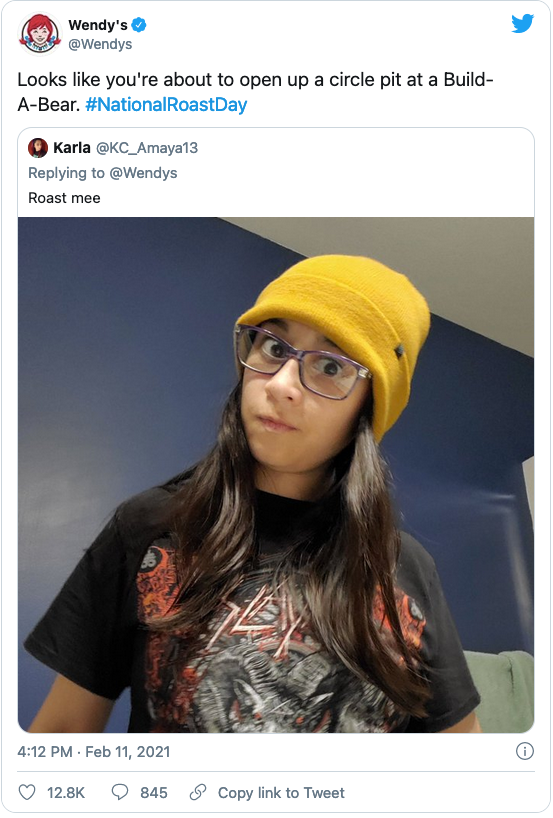Every brand in today’s world knows that in order to be truly successful, you must be on social media. This is partially because the marketing power is great. Another reason is the societal ideology that a social media presence confirms an identity. What we mean by this is, if your brand is not on social media in some capacity, customers may not trust it. For example, when you meet or hear of a new person, your first move is to look them up on Facebook or Instagram. This is a way of verifying their identity. It works the same for brands.
Now that we understand the role social media plays in our everyday lives, how do we use it to market a brand? We’ll take a look at the various platform options and see how they each serve various brands and industries.
Facebook is a widely used platform. Users range in age from 12 to 60+ years old. The largest demographic is people between 25 and 34 years old. The most frequent users are those aged 12-34. While the age range seems pretty slim, there are actually a lot of people age 35-65 on Facebook and using it daily, with 2.8 billion monthly active users.
While knowing who is using Facebook is important, it is also paramount to understand how account holders are utilizing the platform. Users almost always visit Facebook on their mobile devices. This is important information because it means that they are scrolling in their free time. That means advertisers need to make their Facebook ads quick, witty, and eye-catching. Targeting features for paid ads on Facebook make this easy to do.
Another aspect to note is that a substantial amount of Facebook users go to the app to read the news. Advertisers can utilize this by making their ads informational. High-income professionals are a large chunk of Facebook’s clientele, so offering them a solution to a problem they face is the best way to grab their attention. If you’re a remodeling company, use your ad to quickly tell them that you can create their perfect kitchen for a low cost and provide a stress-free process.
While this platform can offer gorgeous photos of your projects as a home remodeler, it may not reach the demographic you are looking for. Instagram is a platform for showcasing beauty or sharing indescribable moments. Makeup manufacturers do well by offering their products to “influencers.” These Insta-stars then market these products to their adoring followers. That’s a great, effective marketing strategy, especially if you’re going for 14-26-year-olds. This app’s user base is mostly female, and mostly under the age of 34.
Instagram is also used for funny content. Memes are a very popular form of content and get shared constantly. If your brand can create a comedic post, that might bring you some leads. Virality is important. A short, funny video can shoot a brand into the spotlight. The more original, the better!
If you’re selling something expensive or your consumer base leans toward the older crowd, you’ll only get so far with Instagram. In addition, Instagram’s algorithm tends not to favor organic marketing very much, so paid ads would be the way to go if this platform were to be the right place for you.
 Twitter
Twitter
Now, this is a very interesting platform because it lives in its own world. Twitter is unlike Facebook and Instagram in that it does not encourage pictures in posts. In fact, it’s almost exclusively print. Twitter is used for snappy remarks and one-liners, or news. Big brands like Wendy’s, Xbox, and the President of the United States use Twitter to get messages across quickly. We all saw Donald Trump use it quite frequently to connect to his supporters in real-time. Politicians are probably the most avid users of Twitter, both to state their opinions and to battle their adversaries.
It is also a great tool to define your brand’s voice. For example, Wendy’s has built a Twitter presence in which it posts intermittent marketing efforts in between posts insulting other users or using sarcasm. With nearly 4 million followers, Wendy’s seems to be doing a fantastic branding job. Users actually ask the Wendy’s Twitter account to roast them.
If you opt to use Twitter, defining your brand’s voice is key. If your brand is bigger, using it to post updates or promotions will be beneficial. The tried-and-true way to get your brand noticed on Twitter is to have a captivating and fun brand voice, like Wendy’s, so your followers, and potential customers, are drawn to your brand.
YouTube
Though it is not the most marketable tool when compared to the above, YouTube can be a great way to use your content for organic growth. For example, if your company provides a service like plumbing, a video tutorial about how to unclog a toilet could increase engagement with your brand.
Let’s say someone wants to unclog their toilet, so they click on your YouTube tutorial. They go through all the steps your video explains, but the clog is just too difficult. At the end of the video, they see your contact information with a message saying that your company can come fix any problems that were not solvable using the instructions in the video. Boom, you now have a client.
YouTube is the go-to for web users age 45+. If they want to watch an old video, learn something new, or find a song they can’t remember the name to, they search on YouTube. For this reason, YouTube is a great tool for brands that want to attract working professionals to their products or services.
YouTube has always been a fantastic tool for how-to videos, but putting an ad in before a viral video about something unrelated is not only annoying to the customer but can be shockingly expensive. If the idea of tutorials sounds good, but you want to try something a little more mainstream, you could consider TikTok…
TikTok
TikTok is the newest and most popular app this year. Since the beginning of the pandemic, avid social media users needed something new to do. TikTok provided that platform. This app allows users to create 15 or 60-second videos with or without music. It caters to the younger generation and is a lot like its predecessor, Vine, which went out of business years ago. TikTok is superior in that it has many more effects and a great user interface.
It started as a dance app, but quickly became home to comedy, cute pet videos, and short educational clips. Now, there are several doctors, dog trainers, fitness instructors, and other educators using the app to connect with people all over the world.
That’s where your brand comes in. Construction companies can utilize TikTok to post funny videos of building fails or how-to videos about hanging drywall or fixing a leak. TikTok can be used to educate on just about anything, and with the right expertise, anyone can go viral.
So, which platform is best for you?
Now that you’ve got an idea of how each platform works and who they cater to, which one is best for your brand?
While we always encourage brands to cover as much digital terrain as possible, most brands ultimately put a focus on one platform. The key is finding the one that best communicates with their target audience. You may understand how each platform can help your marketing efforts, but you might also be unaware of how to implement a digital strategy that will effectively utilize the platforms at your disposal.
Digital Bombers can help you define your brand voice, create a digital strategy and content calendar. We will implement that strategy using the social media platform that most effectively communicates your brand’s message. Contact us today to get started on your social media strategy!








